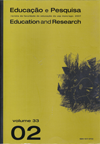Not every blind person reads Braille and not every deaf person knows sign language
DOI:
https://doi.org/10.1590/S1517-97022007000200013Keywords:
Accessibility, Blindness, Diversity, DeafnessAbstract
The objective of this work is to discuss and explain some differences that exist regarding the access to information and to communication among those people who, despite having similar handicaps, experience different inabilities. The methodological approach used here focuses specifically on people with non-simultaneous visual or hearing impairments, with an emphasis on blind or deaf people. The conceptual framework used is the same one adopted by the ICF-WHO classification, and the theoretical framework is complemented with the contributions from other authors which have developed studies related to the issue of inabilities. In addition to bibliographical research, the methodology is supplemented with data collected in observations of adult people in situations that require access to information and to communication. The results have revealed the diversity existing among people with the same type of sensorial impairment, and point out some of the mistakes and damage that may ensue when such diversity is not taken into account. Throughout the text it becomes clear that the differences found among people with the same kind of sensorial difficulty are defined both by their individual preferences and by the limitations and abilities peculiar to each one of them.Downloads
Download data is not yet available.
Downloads
Published
2007-08-01
Issue
Section
Articles
License
Authors assume exclusive responsibility for the concepts expressed in their articles, which do not necessarily reflect the journal’s opinion.
Permission to photocopy all or part of the material published in the journal is granted provided that the original source of publication be assigned.
How to Cite
Not every blind person reads Braille and not every deaf person knows sign language . (2007). Educação E Pesquisa, 33(2), 369-386. https://doi.org/10.1590/S1517-97022007000200013



